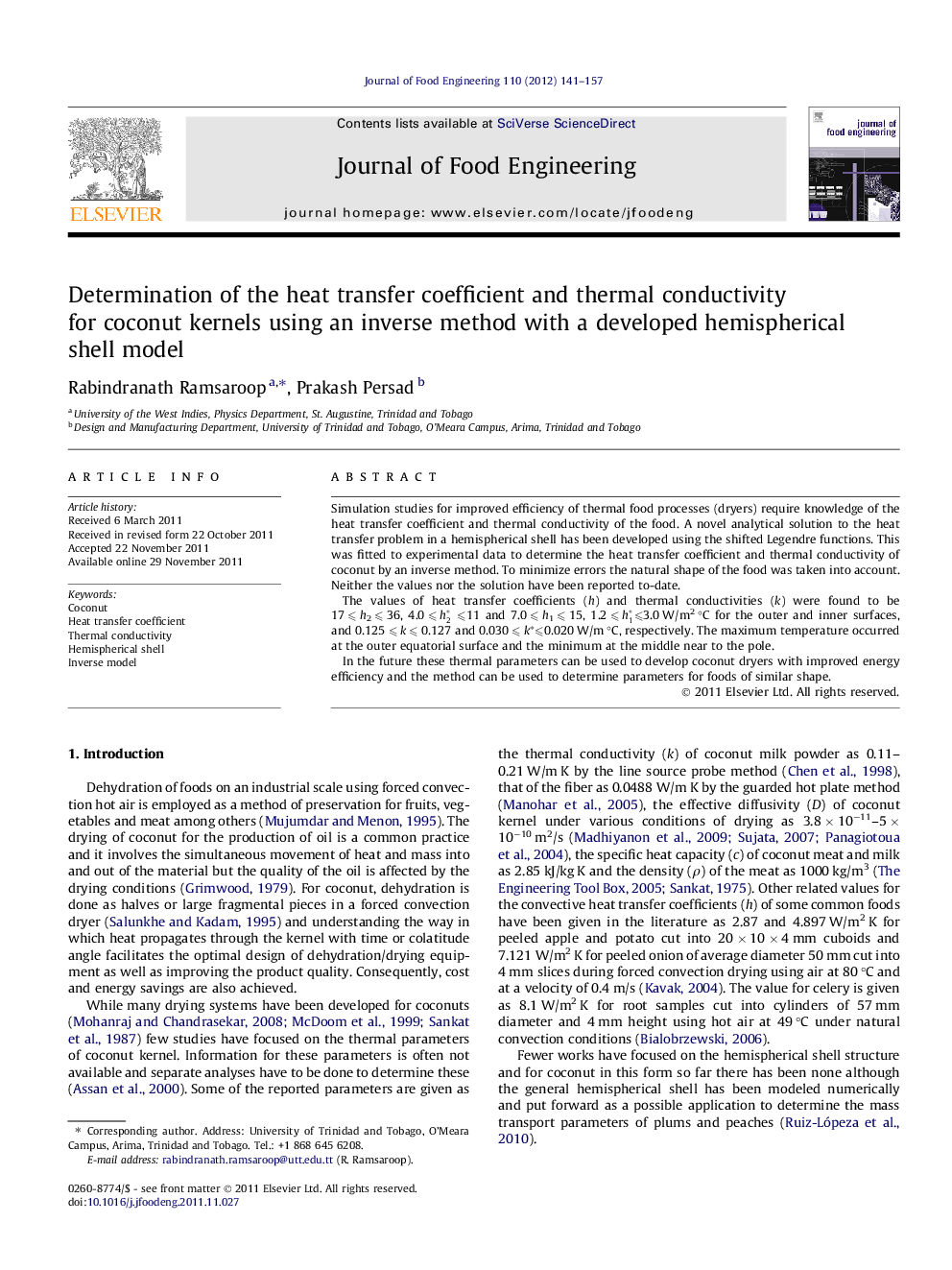| کد مقاله | کد نشریه | سال انتشار | مقاله انگلیسی | نسخه تمام متن |
|---|---|---|---|---|
| 223829 | 464404 | 2012 | 17 صفحه PDF | دانلود رایگان |

Simulation studies for improved efficiency of thermal food processes (dryers) require knowledge of the heat transfer coefficient and thermal conductivity of the food. A novel analytical solution to the heat transfer problem in a hemispherical shell has been developed using the shifted Legendre functions. This was fitted to experimental data to determine the heat transfer coefficient and thermal conductivity of coconut by an inverse method. To minimize errors the natural shape of the food was taken into account. Neither the values nor the solution have been reported to-date.The values of heat transfer coefficients (h) and thermal conductivities (k) were found to be 17 ⩽ h2 ⩽ 36, 4.0 ⩽ h2∗ ⩽11 and 7.0 ⩽ h1 ⩽ 15, 1.2 ⩽ h1∗⩽3.0 W/m2 °C for the outer and inner surfaces, and 0.125 ⩽ k ⩽ 0.127 and 0.030 ⩽ k∗⩽0.020 W/m °C, respectively. The maximum temperature occurred at the outer equatorial surface and the minimum at the middle near to the pole.In the future these thermal parameters can be used to develop coconut dryers with improved energy efficiency and the method can be used to determine parameters for foods of similar shape.
► Thermal properties of a material allow energy optimized thermal processes to be developed.
► Solution of the heat transfer diffusion equation for coconut as a hemispherical shell.
► Determination the heat transfer coefficient (h) and thermal conductivity (k) of coconut by an inverse method.
► Code was developed to program the solution as a two part fit. The h and k values were different for each part of the fit.
► Shell temperatures were now predictable and were found to be dependent on heating temperature, radius and colatitude angle.
Journal: Journal of Food Engineering - Volume 110, Issue 1, May 2012, Pages 141–157